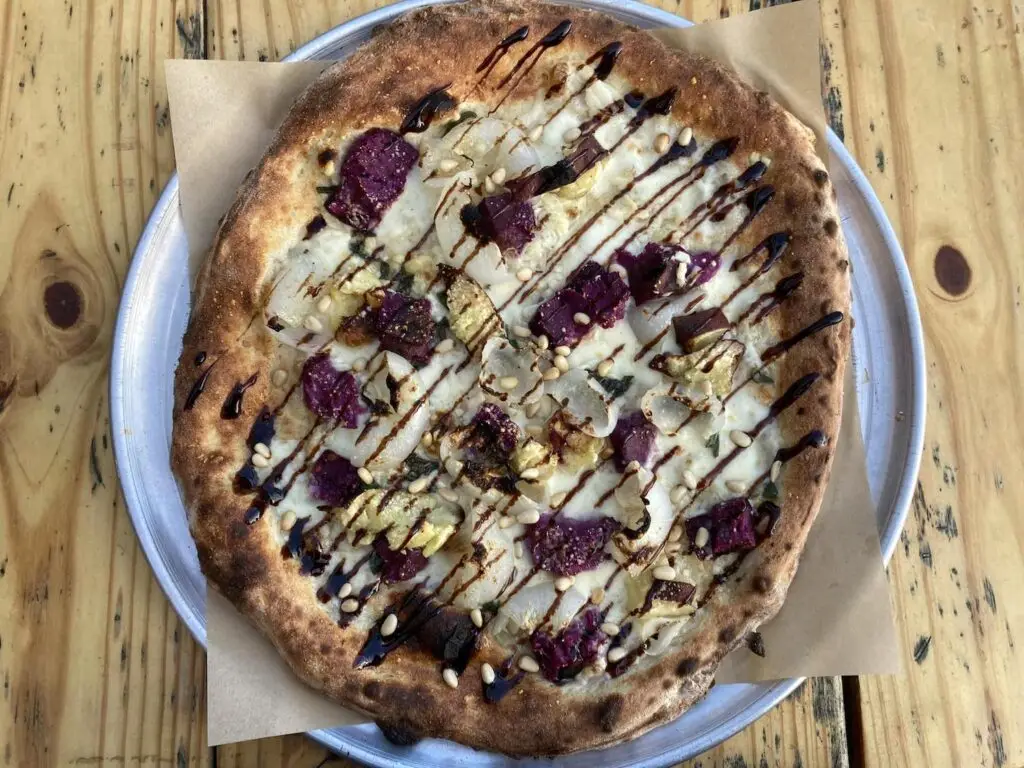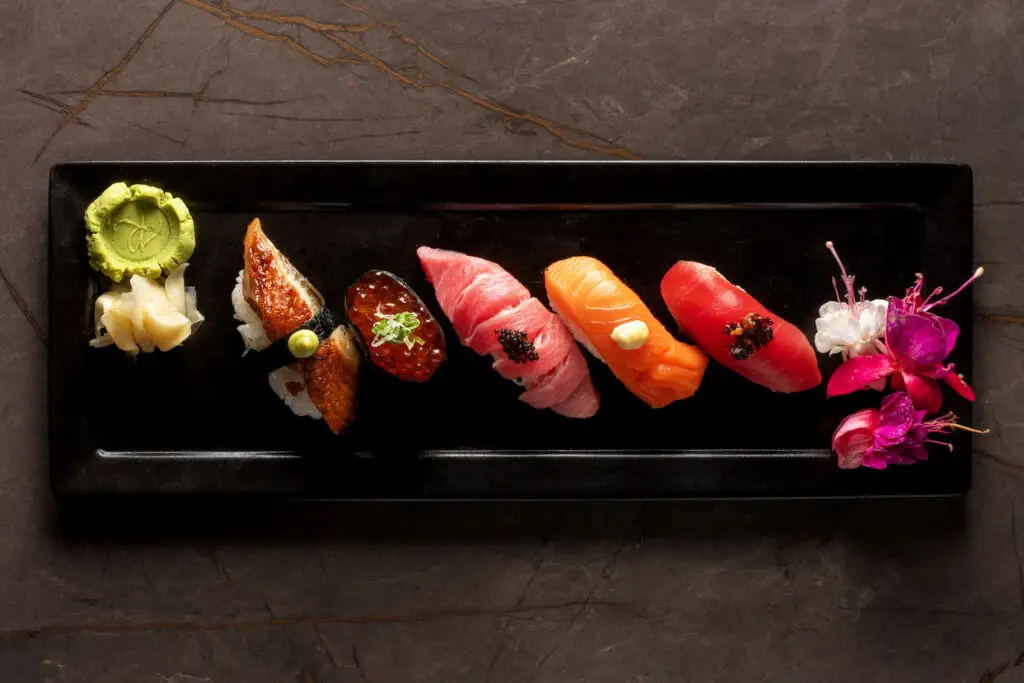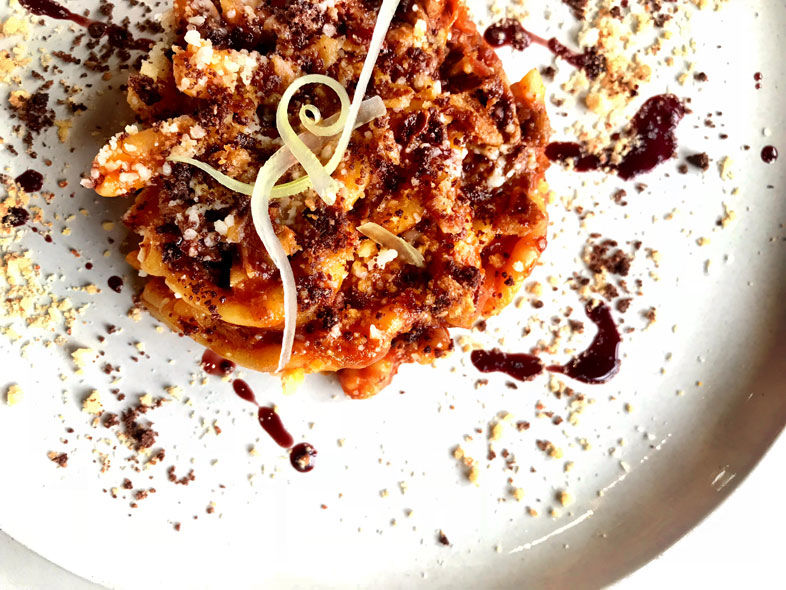This mall is hard. The parking’s hard. This much uniform stucco smothers souls. Malls have the opposite of sex appeal, even this small one in San Diego’s ever-hip gay borough of Hillcrest. But if you cook well enough, they will come—and that’s especially the case with Maestoso.
Chef Marco Maestoso has spent most of his life in Rome. He started as a scientist until ditching the lab coat and attending Rome’s famed Gambero Rosso, which is ground zero for the slow food movement in Italy. From there he staged (interned) under a few Michelin-starred chefs before landing in New York with his girlfriend, Dalila Ercolani. After a series of sold-out pop-up dinners in their apartment, they returned to Rome and opened a fine-dining restaurant called Casa Maestoso.
The bustle and grime of Rome bummed him out. Marco told Dalila they had to move or depression was imminent. His childhood friends Christopher Antinucci and Giulia Colmignoli owned Napizza in San Diego, and they suggested they relocate and open Maestoso together.
The setup is all chef. There are no servers. Four chefs on the floor with the diners, four chefs in the kitchen. It’s chef-to-table. They roll carts around with different creations, all with their own stands proclaiming the price. Like dim sum.
Maestoso has a wraparound patio, with a nicely shaded area off the side. Marco is fiery and passionate. His beard seems to shake when he talks about food and quality ingredients and what’s wrong with Italian food and what’s right about Italian food.
What’s right about their Italian food is pretty much all of it, as I discovered at this tasting. He’s using the very best ingredients, tweaking them in next-level ways (confit vegetables, sous vide proteins, dehydrated ingredients, etc.), and he’s got a sense of humor (see the bacon and eggs dessert). Here’s a rundown of the best we had:
Coda Alla Vaccinara
One of the oldest recipes in the world. Oxtail is braised in mirepoix and spices, stained with a spoon of tomato paste, and garnished with a spicy chocolate crumble and toasted Parmesan cheese. Oxtail is the most flavorful cut of beef, and the textures here are phenomenal.
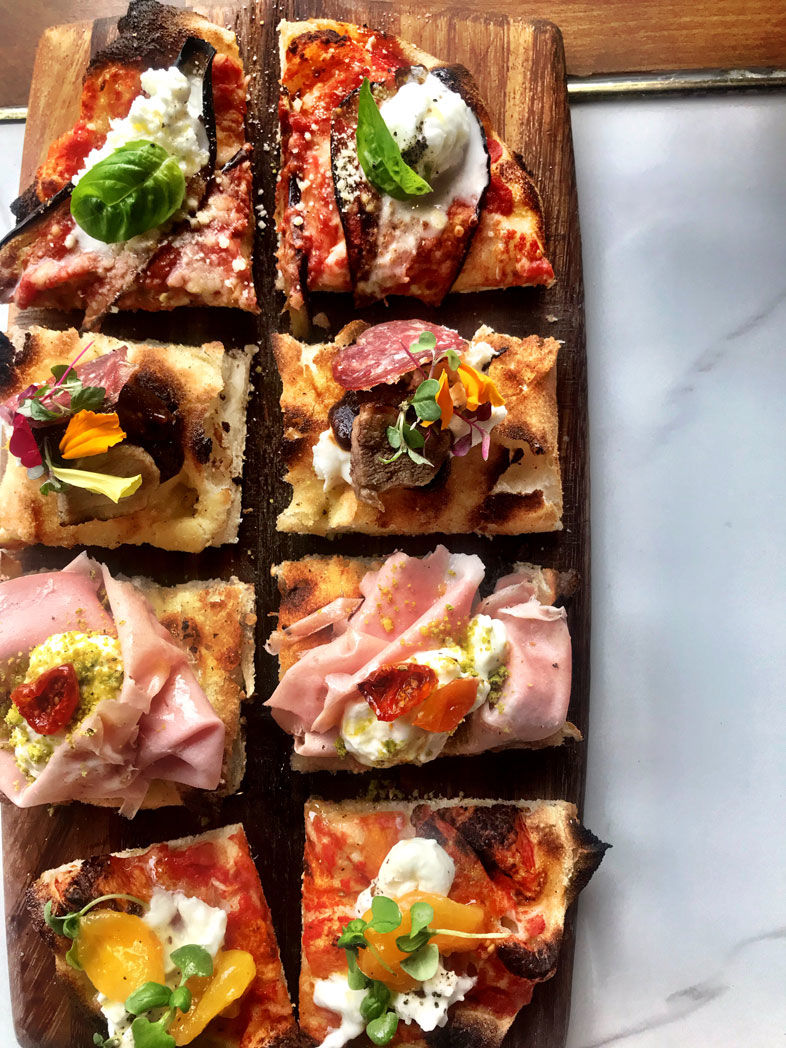
Taste Test: Maestoso
Photo by Troy Johnson
Pinsa
Maestoso believes humans were never really intended to eat all that wheat, so he serves pinsa instead of pizza. With pinsa, the dough is 78 percent water, with a little wheat, rice flour, and soy. The result appears to be a thick-crust pie, but inside it’s airy like a puff pastry. Easily preferable to the everyday dense pizza crust. Their riff on the Margherita, with burrata cheese and tomatoes that are confit in olive oil, is excellent. As is the one with duck breast, goat cheese, wild boar salami, and dried fig compote.
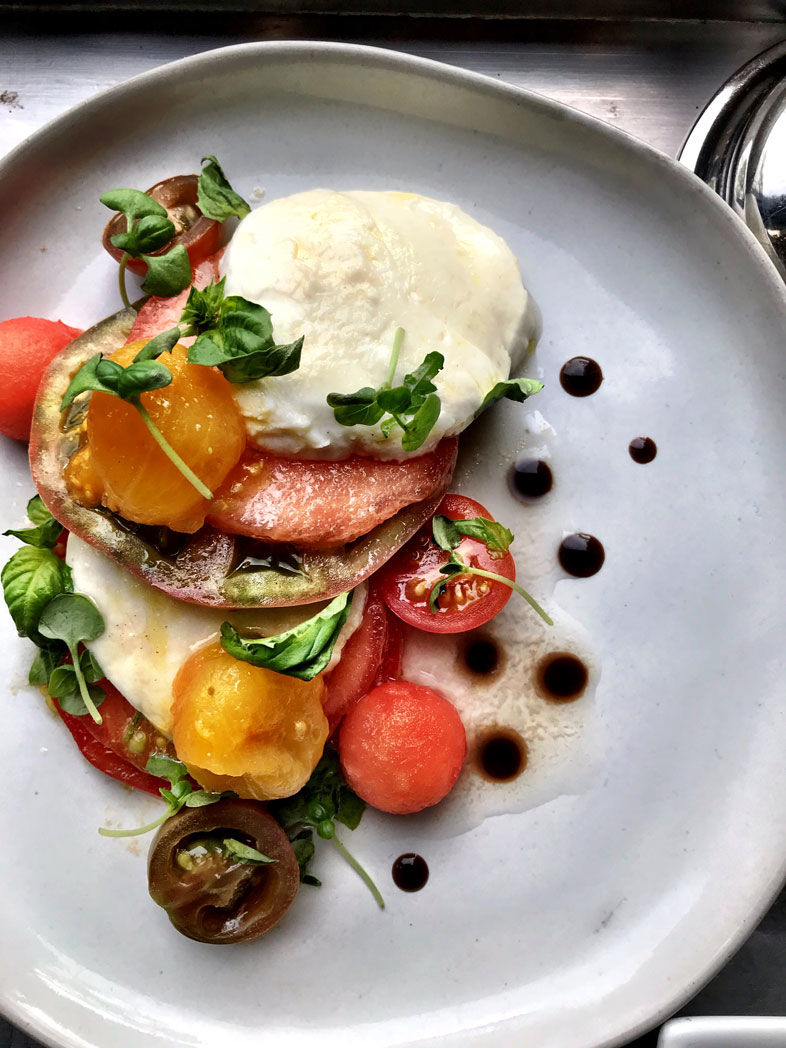
Taste Test: Maestoso
Photo by Troy Johnson
Watermelon Caprese
Burrata is paired with seasonal heirloom tomatoes and watermelon slices, all dressed with basil oil, Maldon salt, and white pepper. A fresher take on the already fresh Italian classic appetizer. The salt on the watermelon adds a Southern Californian agridulce (sweet and sour) aspect to the classic.
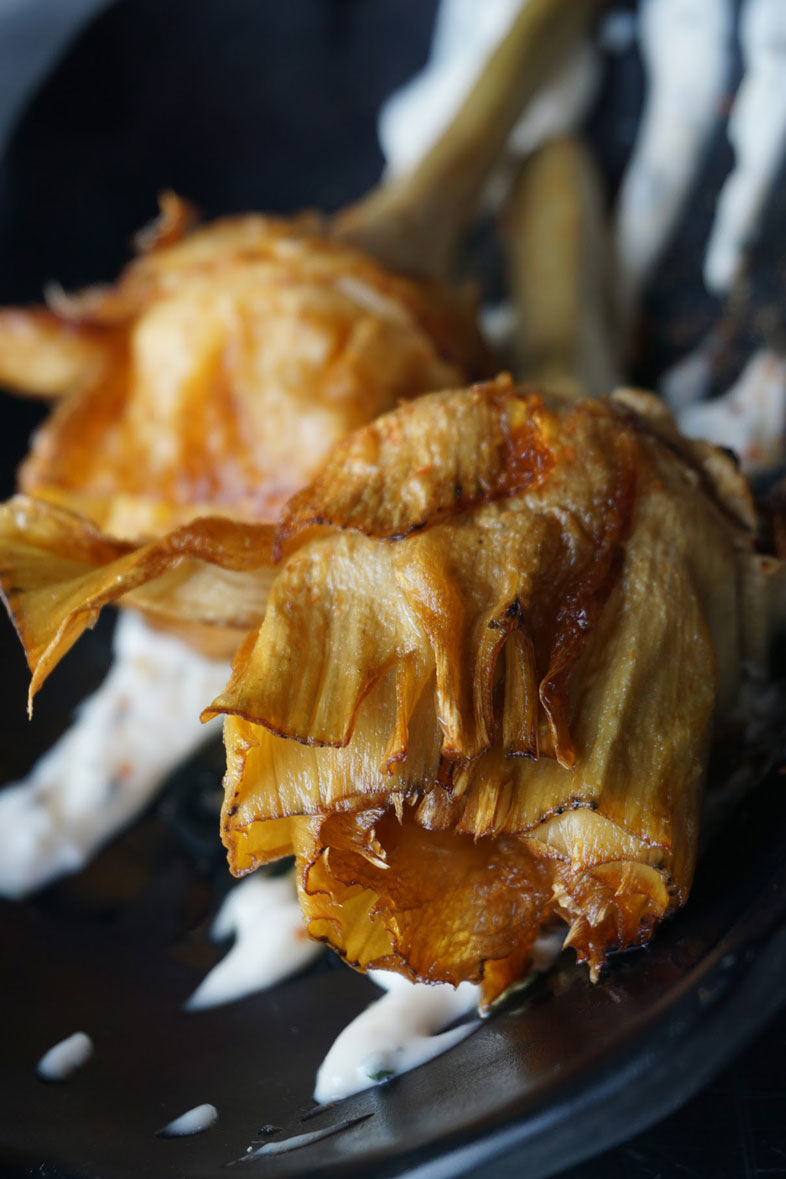
Taste Test: Maestoso
Photo by Claire Smith
Fried Artichoke
Cooked confit in olive oil and dressed with garlic and mint, then coated in semolina flour and deep fried. You can hear the texture on it, and the aioli sings with garlic and anchovy.
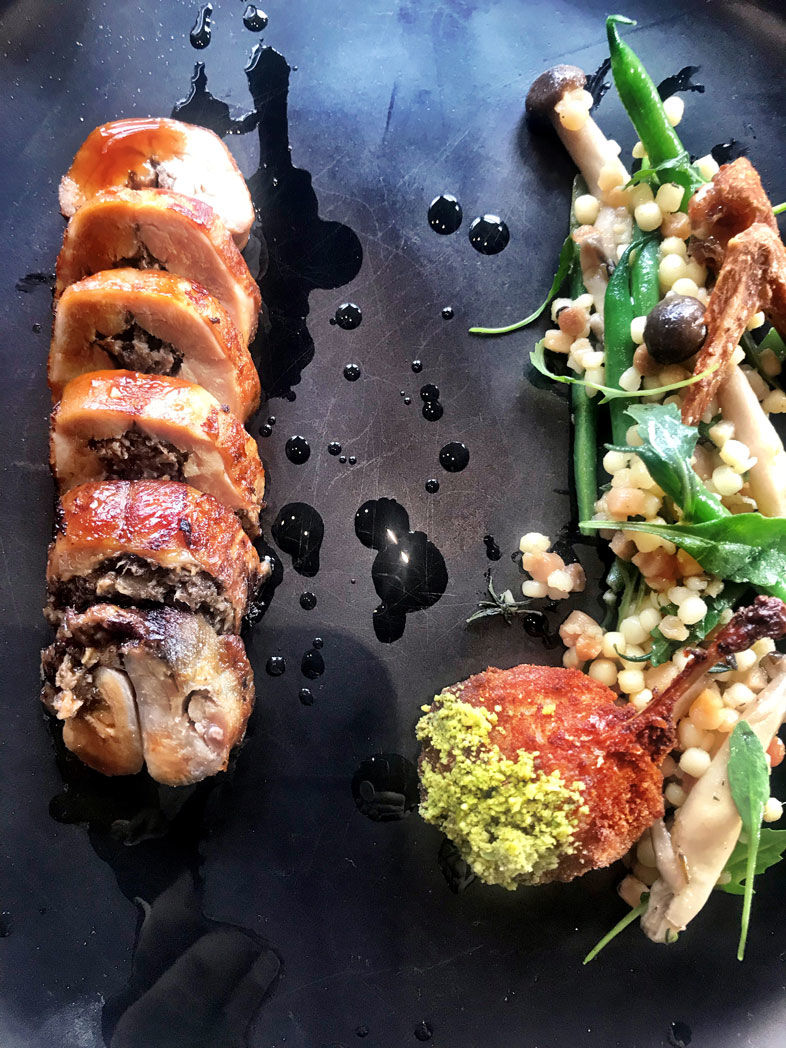
Taste Test: Maestoso
Photo by Troy Johnson
Mushroom-stuffed Quail
Deboned quail, stuffed with duxelles (finely diced mushroom). The body is cooked sous vide and seared, and the legs are fried and breaded in pistachio crumble. The plate is finished with quail demi-glace and a turmeric balsamic vinegar. Quail can be undercooked or cooked until it’s dust, but this is perfect, with the mushrooms not overpowering the delicate flavor of the tiny bird.
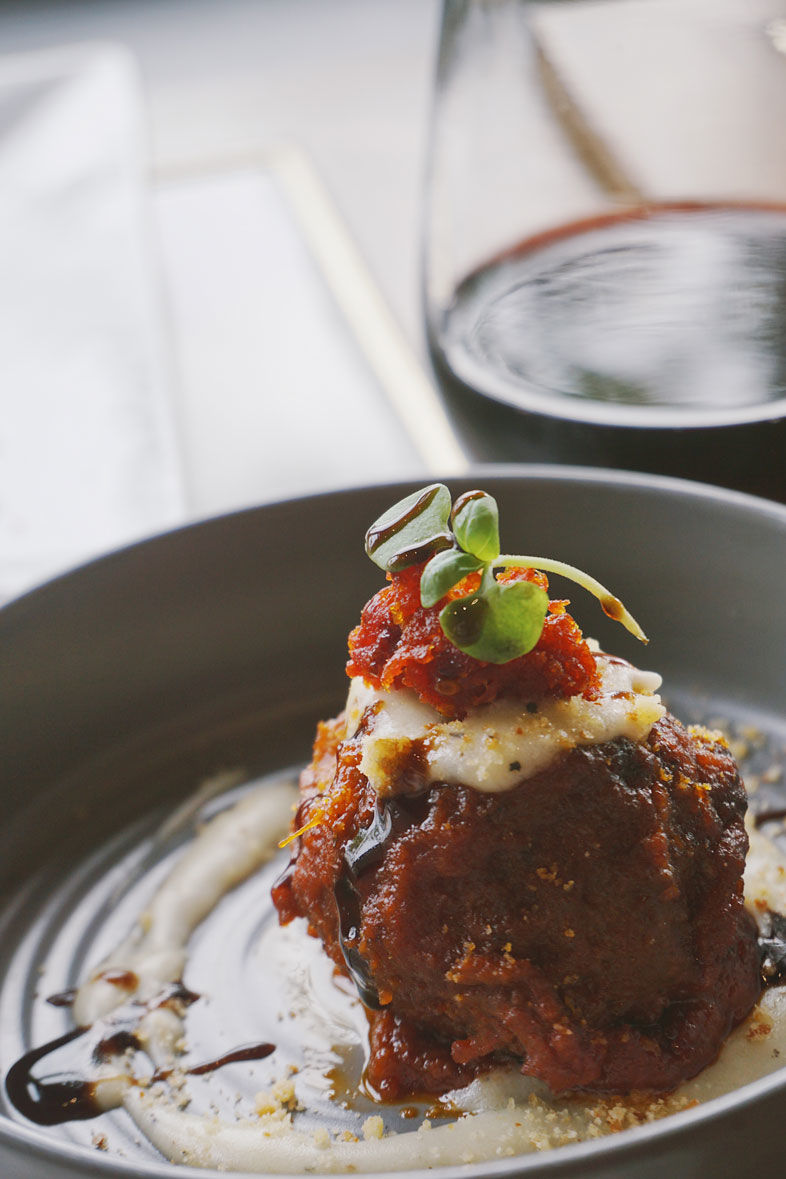
Taste Test: Maestoso
Photo by Troy Johnson
Majestic Meatballs
Chef Marco’s signature recipe for meatballs includes pork, beef, and veal with a mix of fresh herbs and a sun-dried tomato paste blended with olive oil. The meatballs are served on a Parmesan fondue and topped with a spoon of house tomato sauce. If there’s any gripe, it’s that the meatball falls apart a touch. But the meat is so tender and delicious, and that sun-dried tomato paste is brighter than plain-old paste.
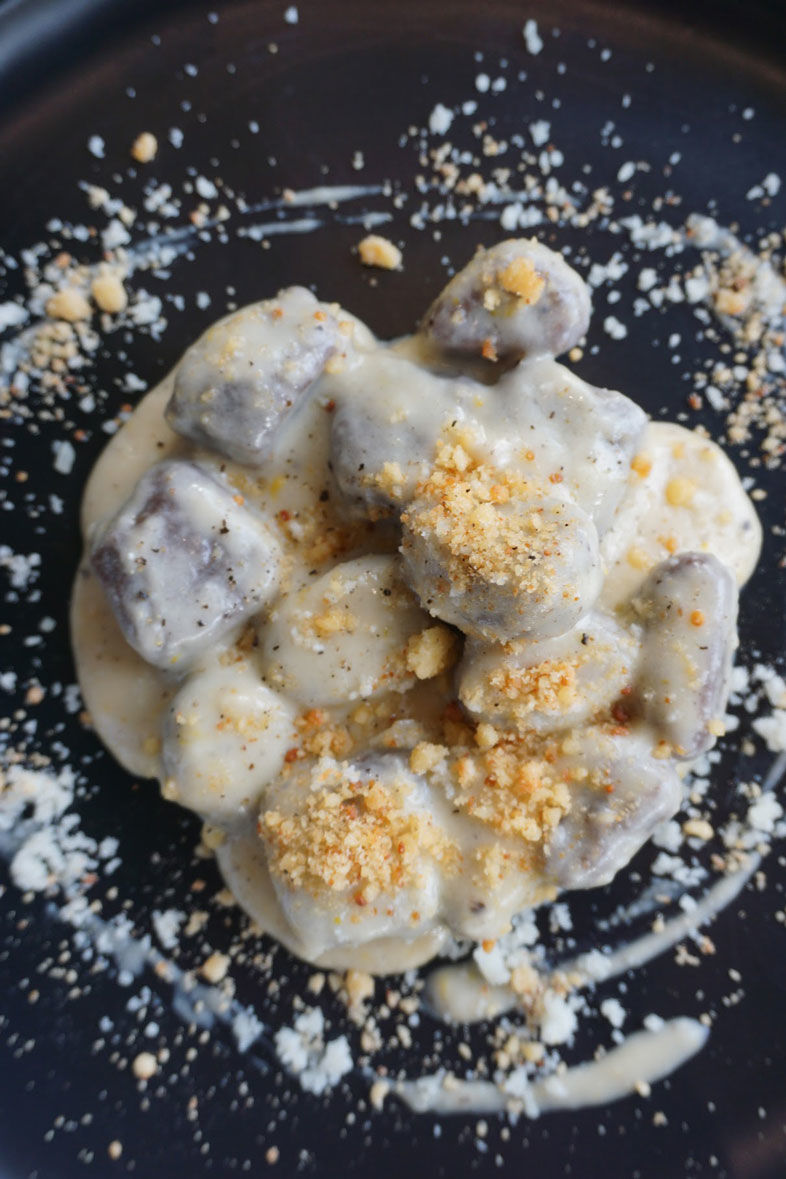
Taste Test: Maestoso
Photo by Troy Johnson
Cacio E Pepe
Hard to call it that, since Chef Marco’s is pretty far from the legendary original Italian recipe. For his pasta he makes a chocolate gnocchi that’s finished with pecorino and black pepper, then topped with bread crumbs and orange zest. The orange-chocolate combo is one of my personal favorites, although it could be jarring for some.
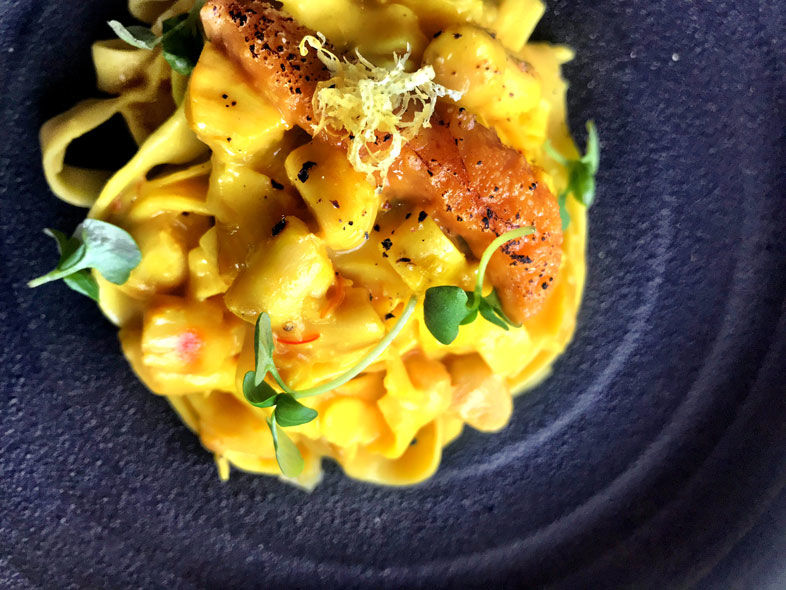
Taste Test: Maestoso
Photo by Troy Johnson
Zafferano, Zenzero, and Fish
A saffron fish stock with grated ginger and chunks of fresh local fish from Catalina Offshore, one of the top seafood houses in town. Handmade spaghetti is garnished with tomato oil, caramelized ginger, and red pepper flakes. A perfect expression of saffron.
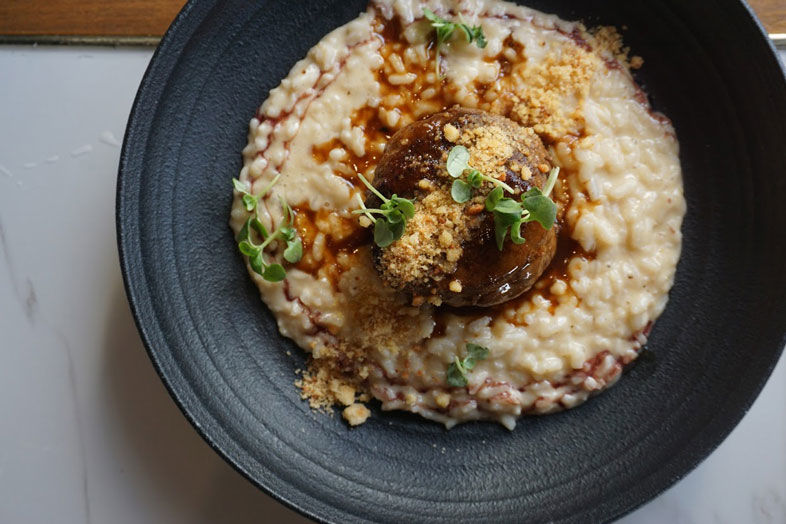
Taste Test: Maestoso
Photo by Troy Johnson
Wagyu Fillet with Parmesan Risotto
On a base of 40-month-old “vacche rosse” Parmesan cheese risotto (made with milk from red and white Italian cows), an American Wagyu is set in the middle of dish, covered with house demi-glace. The meat is cooked sous vide at 129.2 degrees on the verge between rare and medium rare, and the plate is finished with a red wine reduction and crispy vacche rosse Parmesan. The meat just falls apart.
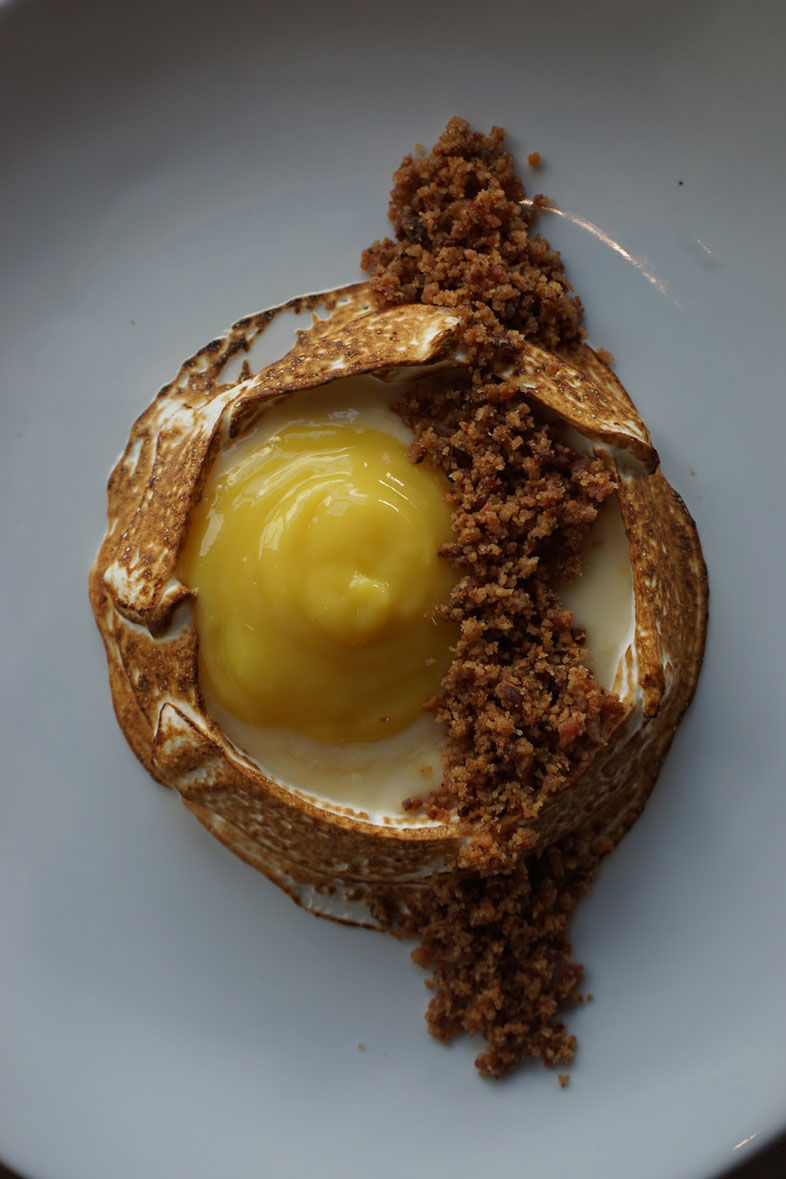
Taste Test: Maestoso
Photo by Claire Smith
Uovo di Limone
Lemon egg dessert, a signature for Chef Marco and a riff on the American eggs and bacon breakfast classic. A lemon and ginger panna cotta is surrounded with toasted Italian meringue. The “egg” is a lemon zest curd, and the “bacon” is dehydrated and caramelized guanciale (pork cheek). I usually don’t like bacon or any of its relatives in desserts, but this works because of the caramelization and the power of the lemon curd.
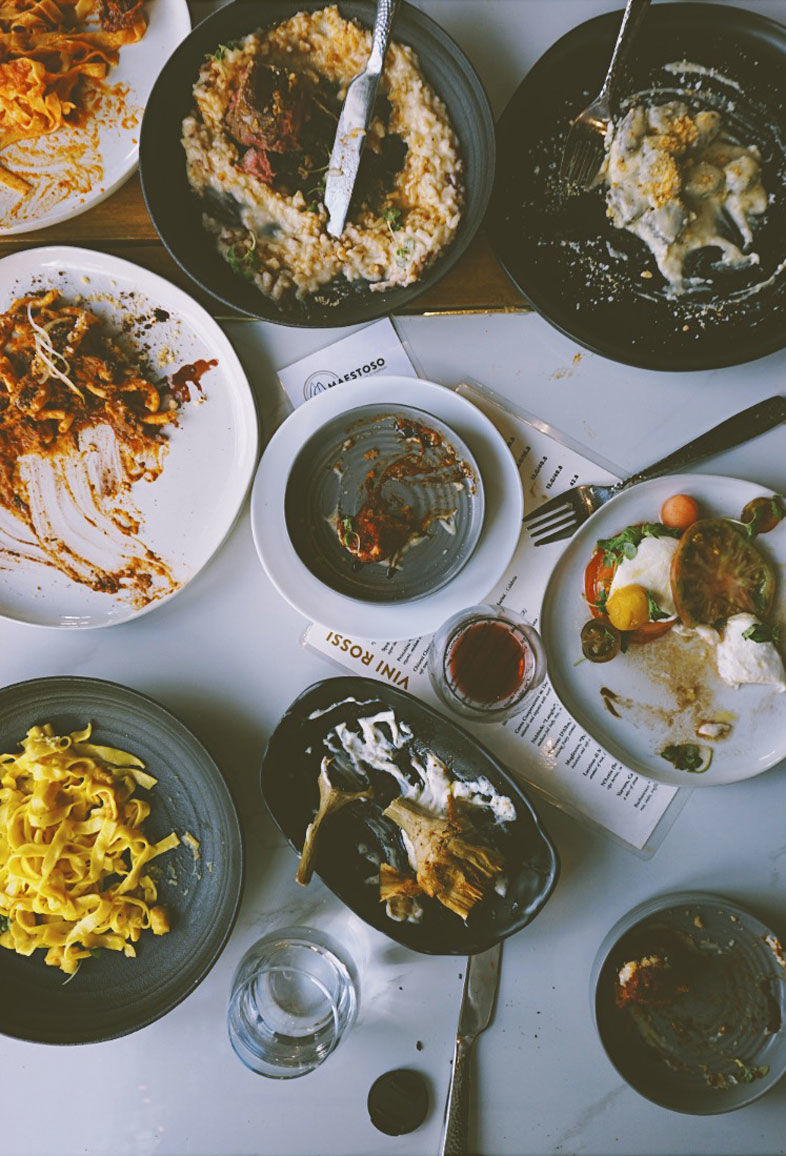
Taste Test: Maestoso
Photo by Claire Smith
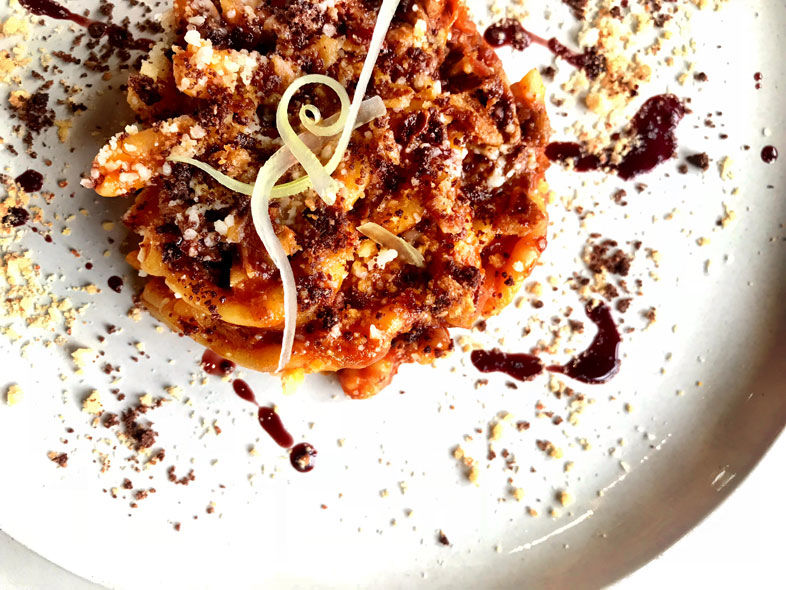
Taste Test: Maestoso
PARTNER CONTENT
Coda alla vaccinaria at Maestoso | Photo by Troy Johnson
